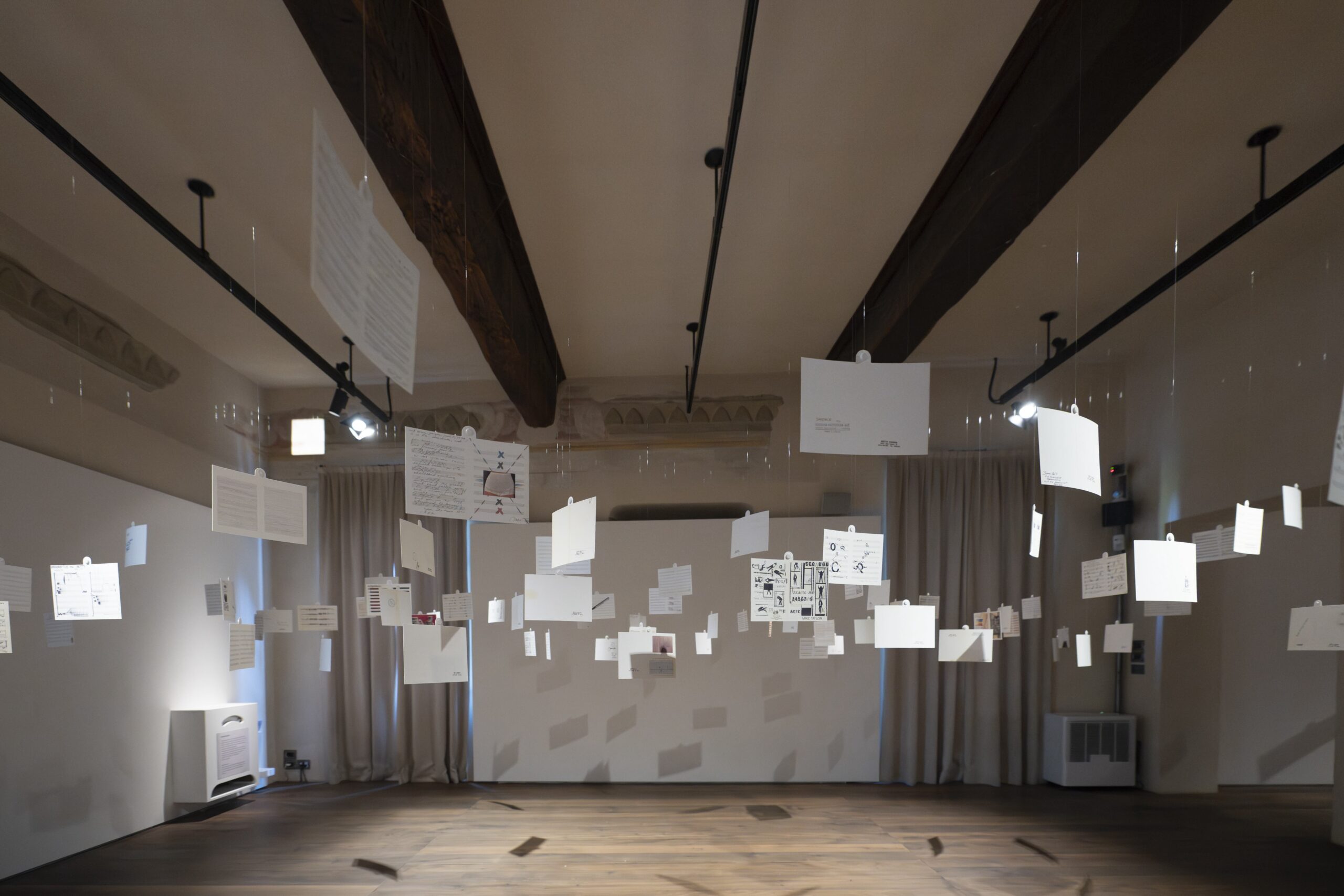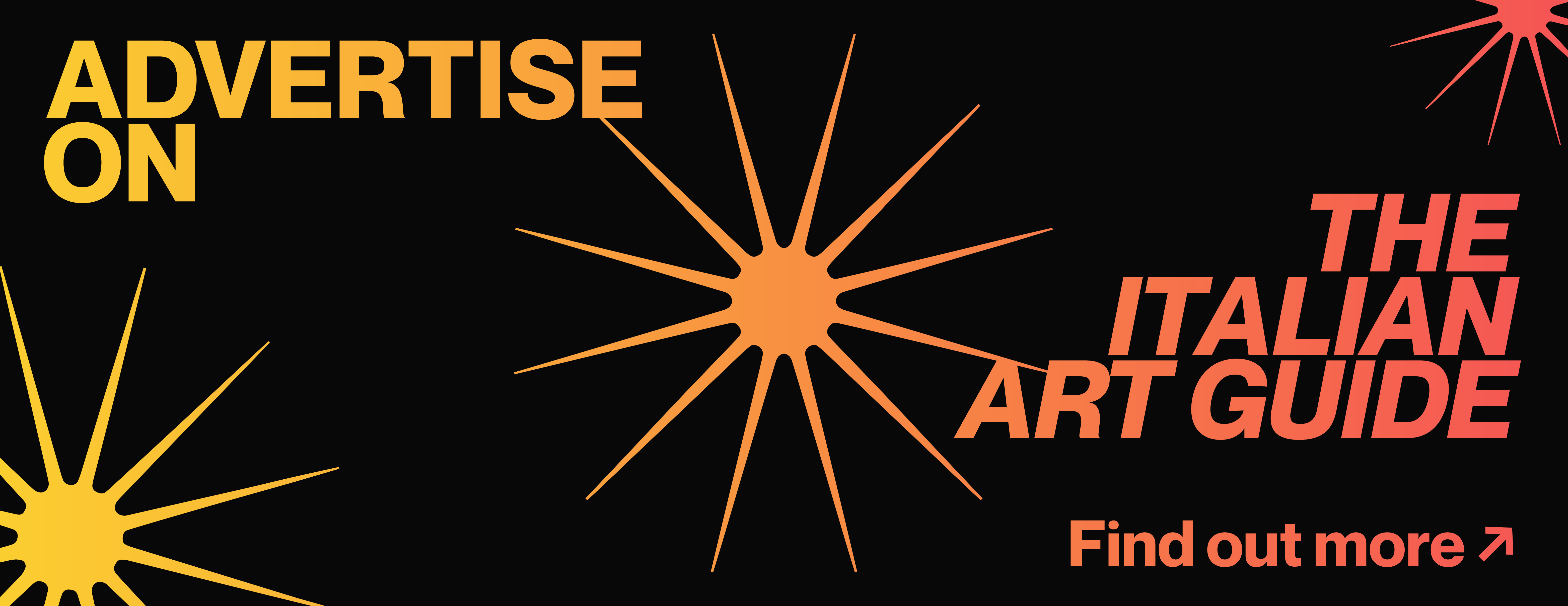3 Exhibitions to See in November
Our guide to exhibitions in Italy
By Marianna Reggiani
04.11.2025
Clicca qui per leggere questo articolo in italiano
Amid the frenzy of Artissima and Art Basel Paris, a season of openings, previews, and glittering vernissages, we propose three exhibitions for those who look to contemporary art for something calmer and less marketable: understanding, honesty, and patience.
Perhaps, at times, running without stopping leads nowhere, and obsessively polishing the windows in an attempt to achieve apparent perfection will not make the experience more complete; on the contrary, it risks remaining one of the many automated actions that distract attention from what is truly important. The Scandinavian duo Elmgreen & Dragset reminded us of this perfectly: their exhausted gallerist, asleep behind Massimo De Carlo’s window in Paris, has become the only real star of this French art week, making headlines around the world.
A mirror of the real — or rather, hyperreal — condition of many art professionals, the installation “October 2025” asks whether we too might end up like this: asleep on a table while the world outside photographs us and moves on. It challenges the logic of a system that crushes those who slow down and rewards those who dominate.
The three selected exhibitions tell the stories of those who have repeatedly challenged the system, reestablishing priorities and desires, goals and motivations.
Betty Danon. Io e gli altri – Fondazione Cosso, Pinerolo (until 8th December)

Castello di Miradolo, Betty Danon. Io & gli Altri, installation view. ph Paolo Mantovan
Beki Aluf chose the name Betty Danon early, revealing her deep-seated belief in the power of words. “Betty” because, rather than the name that tied her to her native Turkey, she preferred a sound that reflected the pro-American environment in which she grew up; “Danon” because she too followed the custom of taking her husband’s surname when she moved with him to Milan in 1956, not yet thirty.
Danon’s artistic practice is retraced in its entirety for the first time in the exhibition at the Cosso Foundation, which reveals the eclecticism of a figure who quickly understood what she wanted from the mainstream art scene: to stay away from it.
Early on, influenced by her encounter with Jungian psychology, based on the essential vocabulary of the circle and square, which Danon translated into highly personal visual writings, in the 1980s she retreated into a more intimate and private world: she thus became a pioneer of Mail Art in Italy, where the first experiments of the Fluxus group had not yet arrived.
The exhibition “Me & the Others” appropriates the title of the 1979 work, which established Betty Danon as the spokesperson for a collective sentiment: two hundred postcards with musical notes, on which several artists—Tomaso Binga, Maria Lai, Mirella Bentivoglio, Emilio Isgrò, Sol LeWitt, Nam June Paik, among others—have made their own interventions, express the vitality and poetry inherent in an art form that draws joy from exchange and does not get bogged down in sterile self-celebration.
The choral nature of the work thus reflects a generation of artists who increasingly speak of relationships, connections, signs, and intimate writings, in a progressive distancing from traditional narratives.
And so, the research that began as a solitary journey, nourished by that very isolation, culminates in a polyphonic work — a celebration, a banquet, a joyful concert of many voices.
Lee Miller. Opere 1930-1955 – CAMERA, Torino (until 1st February 2026)

The exhibition at Camera concludes a year in which Lee Miller has been the subject of much discussion—perhaps because of the release of the film starring Kate Winslet, perhaps because specific figures mistreated by art history sooner or later come back to take their toll. It’s the final installment, the definitive account—curated by Walter Guadagnini—of an artist who, confined for decades within rigid and reductive definitions, is now finally seeing her own unique complexity restored.
The trajectory of her life, from a young model to a war photojournalist, is inextricably linked to her collaboration with Vogue: at nineteen, she inhabited its pages thanks to her extraordinary charm, and at thirty, she filled them with photographs taken while accompanying the American army during the Second World War, documenting the piles of corpses, the extermination camps, and the suicides of Nazi gendarmes on the eve of the Liberation. She paid the price of that freedom with her mental health, permanently compromised by depression and post-traumatic stress disorder.
As defining as the experience of war was for Miller, the exhibition does not ignore the many lives she lived despite it all—as a Surrealist artist and actress, a trusted friend of Max Ernst and Leonora Carrington, a lover of Man Ray, and an explorer in love with Egypt. Yet, of the seven rooms organized into thematic sections, as many as three are dedicated to the war. It is clear, then, that any attempt to separate Lee Miller from that traumatic, visceral experience amounts to an act of mystification. It was there that she photographed with the greatest honesty, clarity, and awareness, recognizing that within that torment there was no space for the lyricism that had marked her surrealist phase.
The exhibition at Camera thus seeks to restore the depth of a figure who has long been the subject of inaccurate, partial, and diminished interpretations. To free Miller from the prison of being a “muse,” to do justice to her creative exuberance and the unwavering power of her photography, Camera is exhibiting approximately 160 photographs, many of which are unpublished and drawn from the Lee Miller Archives.
Claire Fontaine. Casa Fontana – Francesco Pantaleone Gallery, Palermo (until 13th December)

Claire Fontaine, Rosso Mediterraneo, 2025, digital print on archival paper. ph Fausto Brugantino, courtesy Francesco Pantaleone Palermo.
From tables laden just before Christmas to sacks of flour with holes in war zones, today, more than ever, food becomes a cruel symbol of well-being or illness, wealth or poverty, privilege or marginalization.
For a society now unaccustomed to slowness and confined by performance-driven logics, the reflection proposed by Claire Fontaine in Palermo is uncomfortable and unappealing: what does the food we eat truly represent?
A weapon in war zones, bait for tourists in big cities, and a source of profit within a structure that is harmful to consumer health, food here becomes a means to reflect on the distortions of the society we inhabit and the perversions that drive it.
Convenience food is like social media content: rapid, satisfying, and pleasing to the eye. “Is it a cake?” presents Duchamp’s readymade “Fountain”—the emblem of the “pre-made,” easy to package, sell, and offer—in the form of a cake, a beautiful food that tantalizes the palate but at the same time demands to be displayed in its pristine aesthetic perfection. What do you do, eat it or photograph it? Ambiguity creates a short circuit.
The Casa Fontana project, therefore, aims to understand “how much the ‘Home’ is in danger,” and how the glass case in which we have chosen to lock ourselves—believing we are keeping safe from disease, famine, and poverty—is in fact a cage shaped like a shiny ornament, because if you look closely, that cake probably contains spoiled ingredients.
The fact that the system is broken, that its mechanisms can no longer support the weight of increasingly evident inequalities and disturbing scenarios, is an awareness that demands we break the chain and challenge everything. “Contemporary madness” is reaching its end: a truth too uncomfortable that, like sour wine, goes down the wrong way and that, like expired food, we cannot digest.
Translated to English by Dobroslawa Nowak




